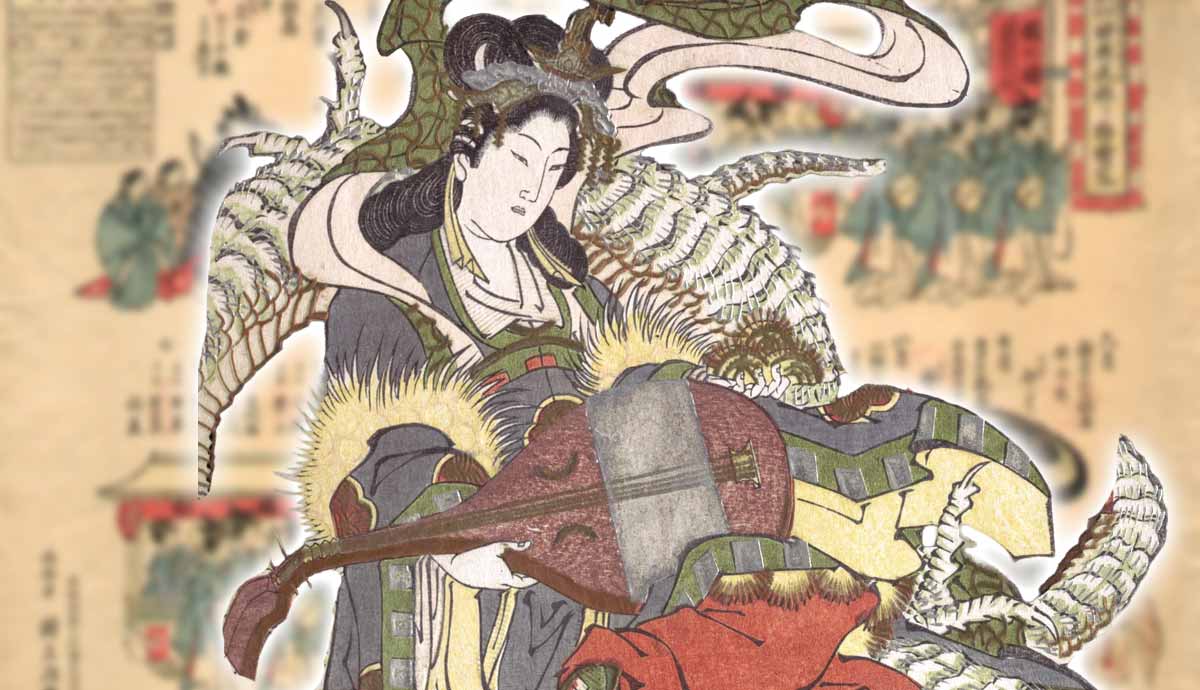0 Commentarii
0 Distribuiri
96 Views

Director
Elevate your Sngine platform to new levels with plugins from YubNub Digital Media!
-
Vă rugăm să vă autentificați pentru a vă dori, partaja și comenta!
-
 YUBNUB.NEWSPritzker Is Finding Out That the Internet Is Forever As Former Police Chief Busts Him for Deceptive VideoWhile the left foams at the mouth as Immigration and Customs Enforcement (ICE) officers arrive in blue cities to apprehend criminal illegal immigrants, the mayors and governors of those cities insist0 Commentarii 0 Distribuiri 96 Views
YUBNUB.NEWSPritzker Is Finding Out That the Internet Is Forever As Former Police Chief Busts Him for Deceptive VideoWhile the left foams at the mouth as Immigration and Customs Enforcement (ICE) officers arrive in blue cities to apprehend criminal illegal immigrants, the mayors and governors of those cities insist0 Commentarii 0 Distribuiri 96 Views -
 YUBNUB.NEWSWhy Trump Chose the Name Abraham for Middle East Peace AccordPresident Donald Trump places a prayer in between the stone blocks of the Western Wall in Jerusalem, Monday, May 22, 2017. (Official White House Photo by Dan Hansen) In the White Houses Trump Declaration0 Commentarii 0 Distribuiri 97 Views
YUBNUB.NEWSWhy Trump Chose the Name Abraham for Middle East Peace AccordPresident Donald Trump places a prayer in between the stone blocks of the Western Wall in Jerusalem, Monday, May 22, 2017. (Official White House Photo by Dan Hansen) In the White Houses Trump Declaration0 Commentarii 0 Distribuiri 97 Views -
 YUBNUB.NEWSCheryl Hines Breaks Silence Following Leftist Attacks on Her Husbands LeadershipActress Cheryl Hines broke her silence following the onslaught of attacks from the left on her husband, Robert F. Kennedy Jr., about his leadership as the Secretary of Health and Human Services.0 Commentarii 0 Distribuiri 102 Views
YUBNUB.NEWSCheryl Hines Breaks Silence Following Leftist Attacks on Her Husbands LeadershipActress Cheryl Hines broke her silence following the onslaught of attacks from the left on her husband, Robert F. Kennedy Jr., about his leadership as the Secretary of Health and Human Services.0 Commentarii 0 Distribuiri 102 Views -
 YUBNUB.NEWSLIVE NOW: House Democrats Meet Privately on Government Shutdown[View Article at Source]U.S. House Democrats meet privately as a caucus at 6 p.m. ET on Oct. 14 to discuss the ongoing government shutdown despite Speaker Mike Johnson (R-La.) canceling votes.0 Commentarii 0 Distribuiri 99 Views
YUBNUB.NEWSLIVE NOW: House Democrats Meet Privately on Government Shutdown[View Article at Source]U.S. House Democrats meet privately as a caucus at 6 p.m. ET on Oct. 14 to discuss the ongoing government shutdown despite Speaker Mike Johnson (R-La.) canceling votes.0 Commentarii 0 Distribuiri 99 Views -
 YUBNUB.NEWSICE Partnership with Oklahoma Highway Patrol Leads to 120 Illegal Alien Arrests, Including 91 Driving Big Rigs with CDLsU.S. Immigration and Customs Enforcement (ICE) teamed up with the Oklahoma Highway Patrol (OHP) for a three-day operation that resulted in the arrest of 120 illegal aliens. The operation, conducted from0 Commentarii 0 Distribuiri 101 Views
YUBNUB.NEWSICE Partnership with Oklahoma Highway Patrol Leads to 120 Illegal Alien Arrests, Including 91 Driving Big Rigs with CDLsU.S. Immigration and Customs Enforcement (ICE) teamed up with the Oklahoma Highway Patrol (OHP) for a three-day operation that resulted in the arrest of 120 illegal aliens. The operation, conducted from0 Commentarii 0 Distribuiri 101 Views -
Why You Should Be Freezing Your Leftover Banana PeelsWhy You Should Be Freezing Your Leftover Banana Peels...0 Commentarii 0 Distribuiri 631 Views
-
 WWW.LIVESCIENCE.COMThe viral 'Chicago Rat Hole' wasn't actually made by a rat, scientists claimAfter researching the rodent indent, scientists are over 98% sure it came from a squirrel.0 Commentarii 0 Distribuiri 102 Views
WWW.LIVESCIENCE.COMThe viral 'Chicago Rat Hole' wasn't actually made by a rat, scientists claimAfter researching the rodent indent, scientists are over 98% sure it came from a squirrel.0 Commentarii 0 Distribuiri 102 Views -
Samsung names the date: Project Moohan is coming for the Apple Vision ProSamsung to launch Project Moohan at October Galaxy event We don't know whether Apple will even hold its October launch event this year, but at least one tech giant has stopped playing coy. Samsung announced "Worlds Wide Open" Tuesday, streaming to a screen near you on October 21. The grandiose name and soaring orbital invite image, above, may be...0 Commentarii 0 Distribuiri 681 Views
-
 WWW.THECOLLECTOR.COM6 Traditional Japanese Instruments From Shakuhachi to ShamisenCertain musical instruments are instantly recognizable as indicative of a particular culture or motif. Hearing the plaintive melody of a bamboo flute, or the thundering sound of battle drums, likely brings images of historical Japan to mind. Many Japanese instruments were and are used in traditional court performances, kabuki and noh performances, religious festivals, and folk music.Common Characteristics of Japanese MusicProcession at Yasaka Shrine, Meiji Period. Source: Ukiyo-e.orgFrom the perspective of someone used to Western music, the music of Japan can seem minimalist or sparse. The concept of mu, or nothingness (silence in this case) prevails. The space between notes is said to have its own character and be just as important to the composition. Also important is the difference in timbre, or the sound that different instruments make when playing the same pitch, often with the main melody played by multiple musicians.That said, the concept of imperfection is valued in music. For example, the sound of air being blown through a flute, even if it makes no sound at first, is desirable, as is the sound of sawari, or fret buzz.Another characteristic of Japanese music is the method by which many of the instruments are played: for example, wind instruments were frequently made from bamboo, and because no two stalks of bamboo are identical, neither would the instrument be. In an ensemble, this could result in an unpleasantly dissonant sound, therefore, there is a lot of tone flexibility through adjustment of lip placement and finger placement. Stringed instruments like the koto or shamisen are built to allow dramatic string bends to raise their pitch, and in the case of the koto, tuning can be adjusted as needed.Scales of Japanese MusicBijin with Shamisen, by Keisai Eisen, Edo Era. Source: Ukiyo-e.orgTraditional Japanese music uses several versions of the pentatonic scale, which is one of the easier scales to tune and play and is almost ubiquitous in world music. The most common pentatonic scale variant is called the kumoijoshi: root, second, minor third, fifth, minor sixth.The in scale, named for the concept of in-yo (the Japanese version of yin and yang) which you might recognise if youve heard the folk song Sakura, starts with the root note, then progresses through minor second, fourth, fifth, and minor sixth: for example, D, Eb, G, A, Bb. This scale lends itself well to more melancholy pieces. By contrast, the yo scale uses the same degrees but the second and sixth intervals are major; D, E, G, A, B.Now that weve discussed the basic characteristics and some of the scales of traditional Japanese music, here are some of the most common instruments played.The KotoKoto and New Years Offering, by Hokusai Katsushika, 1821. Source: Art Institute of ChicagoInvented in the 16th century as a descendant of the classical Chinese guzheng, the koto featured heavily in the musical pieces played in the Imperial court, called gagaku. This instrument usually has 13 strings, but some larger models have 17. The koto traditionally was made with a paulownia wood body. The strings were made of silk and suspended with independently mobile ivory bridges placed on the body of the koto prior to performance. The player would use a set of three plectrums called tsume, which are worn as rings on the thumb, index, and middle fingers of the right hand to play more staccato and brighter notes. The ring and little fingers would produce mellower-sounding notes.The left hand adjusts the positions of the bridges or bends strings to produce a vibrato effect during play. One of the most unique aspects of the koto is that it has no set tuning. Because its music is also meant to accompany vocals, the player can match tuning to the singers voice or alter it how they please to best fit the song, and each string corresponds to a single note in the scale.ShamisenTokyo Geisha playing Shamisen, 1870s. Source: Wikimedia CommonsThe shamisen is derived from the Chinese sanxian, invented in the late 15th century. Its name means three strings. Where the koto was mostly used to play Imperial court music, or gagaku, the shamisen was used for a wider range of performance venues; for example, kabuki and bunraku plays.Japanese theater emphasizes musical and vocal accompaniment, which, if you listen to video game or anime soundtracks, can be clearly heard. Many Edo Period images show geisha playing the shamisen when entertaining wealthy samurai clientele.Musical pieces involving the shamisen tend to be energetic and fast-paced. Its timbre resembles that of a banjo; the picking technique produces a melodic and percussive tone (when used to depict weather, it often represents rain), in part because of the unusually large plectrum called the bachi. It amplifies the energy the player uses to sound the string so that it could be heard clearly over vocal performance or outdoors, where wind and lower acoustics would otherwise make it difficult to hear.Most music is played using honchoushi, a tuning that has the first (lowest) and third (highest) strings at an octave while the second string is a fourth up from the rootfor example, D, G, D. Alternate tunings include niagari, which raises the second string to a fifth (D, A, D), and sansagari, which lowers the first string a step below the root (C, G, D).BiwaBenzaiten (Goddess of Music and Good Fortune) playing a biwa, 1832 woodblock print. Source: The MET, New YorkThought to be the oldest of the stringed instruments of Japan, dating back to the Nara Period (710-794 CE), the biwa features prominently as musical accompaniment for storytellers, similar to the role of the lute in medieval bardic traditions. The biwa has a short neck compared to other instruments of its type, with raised frets (which allow the strings to be bent to raise the pitch of the note being played) and silk strings that are played with a bachi.Most classical versions of the biwa, such as the gaku-biwa (used in court like the koto), moso-biwa (used by Buddhist monks for recitations of mantras), and the heike-biwa (used for recitations of the Heike Monogatari) have four or five frets and four strings. The exact tunings vary, partially because the biwa does not play in standard pitch progressionin other words, playing a chromatic scale does not yield equal intervals between notes.The heyday of the biwa was during the Heian Period (794-1185 CE), but it was also used in performances during the later Edo Period (1600-1867 CE).ShakuhachiShakuhachi Players, by Wada Sanzo, early 20th century. Source: Ukiyo-e.orgThe shakuhachi is a flute made of a single piece of bamboo. The name comes from the length of the bamboo used to craft it: a shaku was a unit of measurement roughly a third of a meter. The -hachi part of the name referred to the eighth sun, which was a tenth of a shaku. Made of the root part of madake bamboo with the nodes hollowed out, the shakuhachi has four finger holes on top and one on the bottom, tuned to the minor pentatonic scale. Shakuhachi players shift the pitch of notes by adjusting the angle at which they hold the instrument to alter the airflow over the mouthpiece, as well as partially covering the finger holes.The shakuhachi in its most current form is properly called the fuke shakuhachi, named after the Fuke sect of Buddhism, whose monks played Buddhist songs and mantras on the flute as a meditation aid. In exchange for acting as covert informants for the Tokugawa shogunate (such as in exposing potential political dissidents), they would be granted the right to freely travel throughout Japan and preach Buddhism through the shakuhachi. During the Edo Period, travel was normally highly restricted.ShinobueUshiwakamaru Woman Playing Shinobue, by Utagawa Yoshikazu, 1866. Source: Library of CongressThe shinobue, also called the takebue, is another flute, but a transverse one similar to the more familiar Western flute. It is smaller than the shakuhachi and plays in a higher register, producing a bright, clear tone. To play, the user anchors the flute against their left shoulder and, positioning their mouth directly over the sound hole, produces a steady stream of air through diaphragmatic breathing. The index, middle, and ring fingers of the left hand cover the first three holes, and all the fingers of the right hand cover the remaining four.Shinobue are used during Shinto festivals, folk song performances, and theatrical accompaniment during noh and kabuki plays.WadaikoDrum of Sakai, by Sadanobu Hasegawa, 1955. Source: Ukiyo-e.orgRounding out our ensemble, we have the wadaiko, or Japanese percussion instrument, also called the taiko, though in Japanese, the word taiko refers to any drum. Drums have played a part in Japanese history and mythology for centuries: samurai armies would use drums to signal and set pace as well as to raise morale. The mythical origin of drums was said to be the sound of Ame-no-Uzume dancing atop an upturned tub to draw out Amaterasu from her hiding placeand many drums had ornate decoration of mythical figures.Two categories of wadaiko exist, grouped by how the animal hide drumhead is secured to the wooden frame: byo-uchi-daiko, which refers to it being nailed in place, and shime-daiko, which refers to the use of ropes or bolts and iron rings around the frame. Byo-uchi-daiko have a fixed tone, frequently as larger, deeper-toned drums like the odaiko or the chudaiko, which are used for simple rhythms in ensembles. On the other hand, shime-daiko are used for playing higher pitches and faster rhythms.Many of the sounds of these instruments are intended to mimic the sounds of nature and stir an almost primal emotional response. Listening to a full ensemble of wadaiko is often described as being similar to the sound of thunder, especially in a venue with proper acoustics. The shakuhachi and shinobue can often resemble bird calls or simply wind. Stringed instruments like the koto, biwa, and shamisen often help to carry more complex melodies.0 Commentarii 0 Distribuiri 99 Views
WWW.THECOLLECTOR.COM6 Traditional Japanese Instruments From Shakuhachi to ShamisenCertain musical instruments are instantly recognizable as indicative of a particular culture or motif. Hearing the plaintive melody of a bamboo flute, or the thundering sound of battle drums, likely brings images of historical Japan to mind. Many Japanese instruments were and are used in traditional court performances, kabuki and noh performances, religious festivals, and folk music.Common Characteristics of Japanese MusicProcession at Yasaka Shrine, Meiji Period. Source: Ukiyo-e.orgFrom the perspective of someone used to Western music, the music of Japan can seem minimalist or sparse. The concept of mu, or nothingness (silence in this case) prevails. The space between notes is said to have its own character and be just as important to the composition. Also important is the difference in timbre, or the sound that different instruments make when playing the same pitch, often with the main melody played by multiple musicians.That said, the concept of imperfection is valued in music. For example, the sound of air being blown through a flute, even if it makes no sound at first, is desirable, as is the sound of sawari, or fret buzz.Another characteristic of Japanese music is the method by which many of the instruments are played: for example, wind instruments were frequently made from bamboo, and because no two stalks of bamboo are identical, neither would the instrument be. In an ensemble, this could result in an unpleasantly dissonant sound, therefore, there is a lot of tone flexibility through adjustment of lip placement and finger placement. Stringed instruments like the koto or shamisen are built to allow dramatic string bends to raise their pitch, and in the case of the koto, tuning can be adjusted as needed.Scales of Japanese MusicBijin with Shamisen, by Keisai Eisen, Edo Era. Source: Ukiyo-e.orgTraditional Japanese music uses several versions of the pentatonic scale, which is one of the easier scales to tune and play and is almost ubiquitous in world music. The most common pentatonic scale variant is called the kumoijoshi: root, second, minor third, fifth, minor sixth.The in scale, named for the concept of in-yo (the Japanese version of yin and yang) which you might recognise if youve heard the folk song Sakura, starts with the root note, then progresses through minor second, fourth, fifth, and minor sixth: for example, D, Eb, G, A, Bb. This scale lends itself well to more melancholy pieces. By contrast, the yo scale uses the same degrees but the second and sixth intervals are major; D, E, G, A, B.Now that weve discussed the basic characteristics and some of the scales of traditional Japanese music, here are some of the most common instruments played.The KotoKoto and New Years Offering, by Hokusai Katsushika, 1821. Source: Art Institute of ChicagoInvented in the 16th century as a descendant of the classical Chinese guzheng, the koto featured heavily in the musical pieces played in the Imperial court, called gagaku. This instrument usually has 13 strings, but some larger models have 17. The koto traditionally was made with a paulownia wood body. The strings were made of silk and suspended with independently mobile ivory bridges placed on the body of the koto prior to performance. The player would use a set of three plectrums called tsume, which are worn as rings on the thumb, index, and middle fingers of the right hand to play more staccato and brighter notes. The ring and little fingers would produce mellower-sounding notes.The left hand adjusts the positions of the bridges or bends strings to produce a vibrato effect during play. One of the most unique aspects of the koto is that it has no set tuning. Because its music is also meant to accompany vocals, the player can match tuning to the singers voice or alter it how they please to best fit the song, and each string corresponds to a single note in the scale.ShamisenTokyo Geisha playing Shamisen, 1870s. Source: Wikimedia CommonsThe shamisen is derived from the Chinese sanxian, invented in the late 15th century. Its name means three strings. Where the koto was mostly used to play Imperial court music, or gagaku, the shamisen was used for a wider range of performance venues; for example, kabuki and bunraku plays.Japanese theater emphasizes musical and vocal accompaniment, which, if you listen to video game or anime soundtracks, can be clearly heard. Many Edo Period images show geisha playing the shamisen when entertaining wealthy samurai clientele.Musical pieces involving the shamisen tend to be energetic and fast-paced. Its timbre resembles that of a banjo; the picking technique produces a melodic and percussive tone (when used to depict weather, it often represents rain), in part because of the unusually large plectrum called the bachi. It amplifies the energy the player uses to sound the string so that it could be heard clearly over vocal performance or outdoors, where wind and lower acoustics would otherwise make it difficult to hear.Most music is played using honchoushi, a tuning that has the first (lowest) and third (highest) strings at an octave while the second string is a fourth up from the rootfor example, D, G, D. Alternate tunings include niagari, which raises the second string to a fifth (D, A, D), and sansagari, which lowers the first string a step below the root (C, G, D).BiwaBenzaiten (Goddess of Music and Good Fortune) playing a biwa, 1832 woodblock print. Source: The MET, New YorkThought to be the oldest of the stringed instruments of Japan, dating back to the Nara Period (710-794 CE), the biwa features prominently as musical accompaniment for storytellers, similar to the role of the lute in medieval bardic traditions. The biwa has a short neck compared to other instruments of its type, with raised frets (which allow the strings to be bent to raise the pitch of the note being played) and silk strings that are played with a bachi.Most classical versions of the biwa, such as the gaku-biwa (used in court like the koto), moso-biwa (used by Buddhist monks for recitations of mantras), and the heike-biwa (used for recitations of the Heike Monogatari) have four or five frets and four strings. The exact tunings vary, partially because the biwa does not play in standard pitch progressionin other words, playing a chromatic scale does not yield equal intervals between notes.The heyday of the biwa was during the Heian Period (794-1185 CE), but it was also used in performances during the later Edo Period (1600-1867 CE).ShakuhachiShakuhachi Players, by Wada Sanzo, early 20th century. Source: Ukiyo-e.orgThe shakuhachi is a flute made of a single piece of bamboo. The name comes from the length of the bamboo used to craft it: a shaku was a unit of measurement roughly a third of a meter. The -hachi part of the name referred to the eighth sun, which was a tenth of a shaku. Made of the root part of madake bamboo with the nodes hollowed out, the shakuhachi has four finger holes on top and one on the bottom, tuned to the minor pentatonic scale. Shakuhachi players shift the pitch of notes by adjusting the angle at which they hold the instrument to alter the airflow over the mouthpiece, as well as partially covering the finger holes.The shakuhachi in its most current form is properly called the fuke shakuhachi, named after the Fuke sect of Buddhism, whose monks played Buddhist songs and mantras on the flute as a meditation aid. In exchange for acting as covert informants for the Tokugawa shogunate (such as in exposing potential political dissidents), they would be granted the right to freely travel throughout Japan and preach Buddhism through the shakuhachi. During the Edo Period, travel was normally highly restricted.ShinobueUshiwakamaru Woman Playing Shinobue, by Utagawa Yoshikazu, 1866. Source: Library of CongressThe shinobue, also called the takebue, is another flute, but a transverse one similar to the more familiar Western flute. It is smaller than the shakuhachi and plays in a higher register, producing a bright, clear tone. To play, the user anchors the flute against their left shoulder and, positioning their mouth directly over the sound hole, produces a steady stream of air through diaphragmatic breathing. The index, middle, and ring fingers of the left hand cover the first three holes, and all the fingers of the right hand cover the remaining four.Shinobue are used during Shinto festivals, folk song performances, and theatrical accompaniment during noh and kabuki plays.WadaikoDrum of Sakai, by Sadanobu Hasegawa, 1955. Source: Ukiyo-e.orgRounding out our ensemble, we have the wadaiko, or Japanese percussion instrument, also called the taiko, though in Japanese, the word taiko refers to any drum. Drums have played a part in Japanese history and mythology for centuries: samurai armies would use drums to signal and set pace as well as to raise morale. The mythical origin of drums was said to be the sound of Ame-no-Uzume dancing atop an upturned tub to draw out Amaterasu from her hiding placeand many drums had ornate decoration of mythical figures.Two categories of wadaiko exist, grouped by how the animal hide drumhead is secured to the wooden frame: byo-uchi-daiko, which refers to it being nailed in place, and shime-daiko, which refers to the use of ropes or bolts and iron rings around the frame. Byo-uchi-daiko have a fixed tone, frequently as larger, deeper-toned drums like the odaiko or the chudaiko, which are used for simple rhythms in ensembles. On the other hand, shime-daiko are used for playing higher pitches and faster rhythms.Many of the sounds of these instruments are intended to mimic the sounds of nature and stir an almost primal emotional response. Listening to a full ensemble of wadaiko is often described as being similar to the sound of thunder, especially in a venue with proper acoustics. The shakuhachi and shinobue can often resemble bird calls or simply wind. Stringed instruments like the koto, biwa, and shamisen often help to carry more complex melodies.0 Commentarii 0 Distribuiri 99 Views



